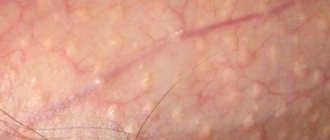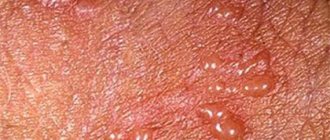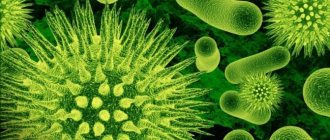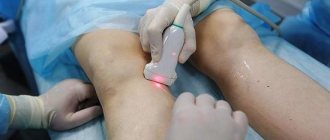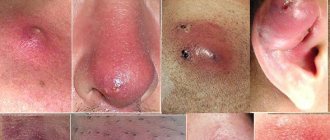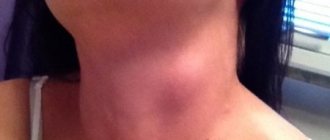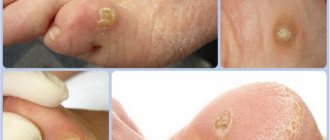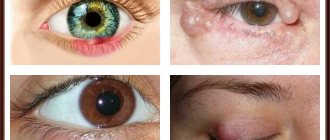Allergies on the neck manifest themselves very often; this is a very sensitive area of the skin and all allergic reactions in such a delicate place cause discomfort and extremely unpleasant sensations.
Possible causes of neck allergies
In most cases, neck allergies (and not only) are associated with the following factors:
- household use of synthetic products, cosmetics and chemicals that come into direct contact with the skin;
- frequent use of preservatives and food additives;
- taking medications that are likely to provoke an allergic reaction;
- exposure to viruses and microbes.
In addition, neck allergies may result from local exposure. Of these local irritants, allergists identify the following causes:
- Long-term effects of sweat (children under one year of age are especially susceptible to it).
- Wearing chains or necklaces (often made of simple metals), which can irritate the skin of the neck through the oxidation process.
- The use of cosmetics can cause a rash (for example, from perfume), redness at the site of application, itching, and burning.
- Rashes due to the use of washing powder that is not intended for children's skin.
- Pollen from certain plants.
- Fur of some animals.
- Food allergens (citrus fruits, fish, etc.).
During pregnancy, the risk of allergies increases, and symptoms may appear brighter and more aggressive.
Symptoms of allergic reactions in the neck area
The most characteristic signs and symptoms of allergies (can be seen in the photo):
- The appearance of spots, redness of the skin, small blisters, scales on the neck, accompanied by a sensation of itching and burning.
- The occurrence of swelling, peeling, dry skin.
- Shortness of breath, headache and other manifestations are possible if the rash or spots in the neck and décolleté are the result of a general allergic reaction in the body.
manifestations of allergies on the neck
How to treat neck allergies
To treat a reaction in the neck, the allergen causing the symptoms must be eliminated. And the first thing that is recommended to do before treating allergies is to contact an experienced allergist and undergo an examination.
As a first aid, various creams, ointments or anti-inflammatory compresses help as a local remedy.
With repeated or constant interaction with your allergen, the situation may worsen, since dermatitis on the neck can turn into eczema. Remember that treating allergies is a long process, sometimes lasting several months or even years.
Disease prevention
In order to prevent relapse and progressive processes - the resumption of allergies not only in the neck, but also in the face, cheeks, and even behind the ears, it is necessary to restore immunity. That is why the doctor often prescribes immunomodulatory drugs.
As for the prevention of allergies in a child, almost every infant can experience some kind of allergic reaction. In children, folds often form on the neck, and a rash appears in this place. But unlike allergies in an adult, a reaction in a child is often caused by overheating from the sun and nutrition. So, for the purpose of prevention, it is necessary to exclude excessive overheating and pay more attention to the diet.
In the modern world, no one is insured against every type of allergy, so it is necessary to have medicines for this disease in your home medicine cabinet. Young parents should be especially vigilant, since the first two years of a child’s life are the period when reactions develop very rapidly.
But in general, no better prevention against allergies than a healthy lifestyle and proper nutrition has yet been invented.
Similar news
- Temperature with allergies
- Allergy to celery
- Hypertrophic rhinitis
- Atrophic rhinitis
Symptoms
A neck allergy is an inflammatory reaction that occurs as a result of the negative effects of various substances on the skin. An allergic reaction may appear immediately after contact with the allergen, or after 24 hours or more.
Allergic rashes on the neck usually appear as red spots, watery blisters, pimples, or hives. In this case, the neck may be very itchy, pain may occur when touched, and there is a feeling that the skin seems to be “burning.”
The rash can be localized either in individual areas or over a large area, merging into a single spot and covering the skin of the face, chest or back. The skin may peel, sometimes swelling and swelling of the tissue occurs. Exposing affected areas to prolonged friction, sweat, or water can significantly worsen symptoms.
Allergic spots on the neck can rise above the surface of the skin or be completely flat, acquiring a brown or white tint.
Diagnostics
To determine the causes and nature of rashes on the neck, you need to consult a doctor - an allergist and dermatologist. At the appointment, the doctor will examine the patient and determine the possible cause of the disease.
As a rule, laboratory tests are prescribed: a general and biochemical blood test, an analysis to determine the amount of antibodies in the body (immunoglobulin E - IgE), an increased level of which indicates the presence of an allergic reaction.
Skin testing (prick test)
Oral antihistamines help relieve itching and redness of the skin. To eliminate a rash on the neck, new generation drugs are used, the advantage of which is that they can be used when driving a vehicle or at work that requires high concentration, since they do not cause a sedative (hypnotic) effect. These drugs include Zodak, Claritin, Suprastin, etc.
Local treatment of allergies in the neck area is possible with the help of non-hormonal, hormonal (corticosteroid) and anti-inflammatory ointments.
Panthenol, Bepanten, Radevit, etc. are used to soften and quickly regenerate the skin.
Fenistil gel or Nezulin will help eliminate itching from insect bites.
If an infection is associated with the rash, for example when scratching blisters, ointments containing an antibiotic or antimicrobial components are used, for example, Levosin, Baneocin, etc.
If non-hormonal drugs are not effective against rashes, corticosteroid ointments for neck allergies are used as prescribed by a doctor. These drugs contain synthetic hormones that help in the treatment of severe allergic manifestations. For example, Hydrocortisone, Advantan, Afloderm, etc.
Also, to eliminate toxic and allergenic substances from the body, enterosorbents are used, which bind these substances in the gastrointestinal tract. These include: Lactofiltrum, Multisorb, activated carbon, etc.
Some forms of allergies can manifest themselves in different ways, on different parts of the skin, and can even appear on such a vulnerable and delicate area as the neck.
With direct exposure to external irritants, various skin diseases develop.
Various factors can provoke the appearance of allergies in the skin of the neck:
- Synthetic clothing
- Cosmetical tools
- Nutritional supplements
- Medicines (gel and ointments)
- Unfavorable environmental conditions
- Pollen
- Wool
- Decorations
An allergic reaction on the skin can occur when exposed to ultraviolet rays in combination with chemicals.
When wearing jewelry made from simple or precious metals for a long time, it is also observed.
Washing powders also contribute to an allergic reaction. After washing, clothes come into contact with delicate areas of the skin, which provokes the development of allergies.
When exposed to pathogenic bacteria or viruses, allergy symptoms may also occur.
On the neck of a small child, allergies can be observed with contact, prickly heat, urticaria, neonatal acne.
If the diet is violated, not only in adults, but also in children, the development of an allergic reaction is also possible.
Very often, the reasons can be hidden and the fight against the allergen can last a long time.
What causes an allergic reaction on the skin?
The skin of our body is not the same everywhere; in some places it is dense and little susceptible to external irritants.
In other parts of the body, including the neck, the skin is very thin and sensitive, which contributes to its irritation under the influence of the slightest provoking factor.
Neck allergies are caused by the influence of external and internal allergens, these are:
- Cosmetics – creams, tonics, moisturizing sprays, perfumes.
- Medicines. An allergic reaction in the form of rash and itching occurs both when using ointments and when using certain systemic medications;
- Food. Most often, delicate skin reacts with rashes when a person consumes eggs, fish, milk, citrus fruits;
- Metals. Necklaces, chains, and beads are worn around the neck. The metals contained in these jewelry can be allergenic to the human body. Metal molecules easily penetrate the skin through friction and cause allergies;
- Animal saliva protein, plant particles;
- Insect bites;
- Fabrics. Allergens can also be found in fabric fibers, whether they are natural or synthetic. The likelihood of an allergic reaction occurring specifically on the neck is caused by mechanical friction of clothing in this place and increased sweating;
- Viruses, microbes. The production of inflammatory mediators often occurs under the influence of pathogenic microorganisms attacking the body.
Children in the first year of life are most prone to developing allergic changes in the neck.
This is due not only to delicate skin, but also to the fact that in this place of the body they also have a skin fold that contributes to overheating, and therefore increases inflammation.
In children, irritation is often provoked by washing powders and improper introduction of the first complementary foods.
Neck allergies can occur as a result of excessive ultraviolet radiation.
Phytoallergy develops when various compresses and lotions based on plants are used in the neck area.
The disease also has a hereditary predisposition and often occurs in people with increased excitability of the nervous system. That is, itching and spots occur at a time of psychological discomfort or under the influence of stress.
Allergic changes in the neck in most cases occur in women. And this is understandable - the fair half of humanity has much softer skin compared to men and women use cosmetics more often.
In this case, the disease can transform into an allergy on the face.
POPULAR WITH READERS: Treatment of eye allergies
How does neck allergies manifest?
When the neck area is exposed to an irritating agent, the following appear:
Redness and itching often occur when metal comes into contact with the skin.
symptoms:
- Redness and swelling of the skin
- Pain and burning
- Small
- Itchy skin
- Dry and flaky skin
These are the most common allergy symptoms. In the future, pain in the head and shoulders and difficulty breathing in the chest may occur.
Also against this background, watery blisters and allergic rhinitis may appear.
Lymph nodes in the neck protect the body from various adverse factors. Even with an allergic reaction, they can become inflamed. In this case, there is pain in the neck area.
A rash and redness of the skin do not always indicate an allergic reaction. These signs may indicate vegetative-vascular disorders, hemangioma, lichen, various infections, etc. To do this, the cause of the disease must be established.
To combat the reaction, it is necessary to identify and eliminate the allergen. You should make an appointment with an allergist and undergo the appropriate tests.
If the skin is regularly exposed to an irritating agent, this can later lead to the development of eczema.
Signs of manifestation
If the allergy manifests itself from local exposure to the neck area, the following symptoms will be noticeable:
- swelling, redness of the skin;
- pain, burning sensation;
- itchy neck;
- dryness and flaking;
- spots, small bubbles, scales.
Then, when an allergic reaction in the neck is part of a systemic reaction, the following symptoms may be added to the above listed:
- headache;
- difficulty breathing;
- swelling of the mucous membranes;
- deterioration of hearing and vision.
The appearance of red spots on the neck is not only due to allergies, they can be the result of autonomic disorders, lichen, atopic dermatitis, insect bites, other skin diseases, hemangioma, infectious diseases, irritations due to sensitive skin, scleroderma. If a person has been under stress for a long time, or has been subjected to overheating, nervous and physical stress, he may develop red spots on his neck.
They will indicate that autonomic disorders have occurred and vascular tone has been impaired. This disease most often does not cause any discomfort or pain. You can eliminate it by following the correct daily routine, doing physical exercises, and taking a contrast shower.
Flaky spots on the neck may also indicate that a yeast-like fungus has entered the human body.
In a patient with lichen, spots appear on the neck, shoulders, and chest.
Under the influence of ultraviolet radiation they become brownish, gradually dry out and disappear. Lichen is treated with Lamisil and Clotrimazole.
Pityriasis rosea, which affects people with weakened immune systems, appears gradually. Just 1 spot, then other smaller ones form around it. They are red in color and may be yellow in the middle. Most often, this type of lichen does not require any special treatment. After 2-3 weeks it goes away on its own.
If a person is sick with vegetative-vascular dystonia, red spots may appear due to great emotional upheaval and consumption of large amounts of alcoholic beverages. Atopic dermatitis also contributes to the appearance of spots on the neck, which can later cause significant discomfort because they are very...
How to deal with allergies?
After diagnosis and clarification of the cause of the allergy, treatment is prescribed.
For skin rashes, various local treatments are used:
- Bepanten. The drug contains the active substance dexpanthenol. The ointment restores, moisturizes and helps eliminate the inflammatory process on the skin. The drug can be used by pregnant women, during feeding, and also to eliminate various types of allergies in children.
- Traumeel. A homotoxic drug that has anti-inflammatory, regenerative and analgesic effects. The medicine will help get rid of allergy symptoms in a short time.
- Fenistil. The gel has antipruritic and antiallergic effects. Used to reduce itching and irritation in allergic skin reactions.
- Advantan. Used in dermatological practice to treat various skin diseases. The drug is also used for dermatitis caused by exposure to irritants.
- Radevit. The drug has a softening, anti-inflammatory, moisturizing and antipruritic effect. The ointment relieves itching, softens and moisturizes the skin.
In addition to ointments and gels, antihistamines are used: Zyrtec, Cetrin, Suprastin, Claritin, etc. Antiallergic drugs are taken orally. They work well on rashes and may cause minor side effects.
Medicines are strictly prescribed by a doctor. It is prohibited to use tablets or ointments on your own. This can lead to various complications.
Traditional methods help well in the fight against allergic reactions.
Allergy medications are prescribed by a specialist
To eliminate redness and itching, you can make lotions from a decoction of string or oak bark. It is recommended to take warm baths. They help reduce itching and discomfort.
To prepare, you will need to take 2 tablespoons of any of the indicated herbs and pour boiling water. Let it brew and use as compresses on affected areas of the skin.
Treatment with folk remedies
In addition to basic drug therapy, traditional methods of treating allergies can also be used.
Choose those recipes that will help eliminate itching, relieve swelling and strengthen the functioning of the immune system.
- A soda compress helps relieve itching. To prepare it, you will need a solution of soda; it is prepared from a spoonful of powder and a cup of warm water. A towel is soaked in this solution and applied to the neck for 10-15 minutes.
- Lotions made from oak bark decoction work well against burning skin. Keep the oak bark compress for at least 15 minutes.
- A cool bath eliminates irritation and reduces swelling somewhat. You can add a decoction of oatmeal, chamomile, or string to the water. Small children with skin allergies are most often bathed in a weak decoction of the string.
- To wipe a child's skin from allergic rashes, use a decoction of bay leaves.
- To strengthen the immune system, use a decoction of nettle or echinacea. They are brewed at the rate of one spoon per glass of boiling water and the liquid is drunk after infusion throughout the day.
Neck allergies do not occur as rarely as we would like. Unpleasant symptoms of the disease can appear in any person, and in order to restore the skin to a healthy appearance, treatment of the pathology must begin as early as possible.
Prevention measures
To prevent the re-development of allergies and avoid relapse, it is necessary to strengthen the immune system.
It is necessary to stop eating allergenic products, not to stay in dusty rooms for a long time, and it is better to avoid them altogether.
If you are allergic to animal fur, contact with them is prohibited.
It is important to prevent children from overheating and be careful about their diet. It must be balanced and correct.
You should maintain a healthy lifestyle, play sports, swim or choose another type of physical activity.
A house or apartment should be regularly wet cleaned at least 2 times a week. For this purpose, it is recommended to use hypoallergenic cleaning products or soda.
You should also remember to change your bed linen every 2 weeks. After the laundry has dried, it must be ironed.
It is recommended to take folic acid and. They increase the body's resistance to various allergens. It is advisable to eat foods rich in folic acid: spinach, tomatoes, pears, sweet peppers, veal liver, etc.
You will learn more about neck allergies from the video:
Noticed a mistake? Select it and press Ctrl+Enter
to let us know.
Liked? Like and save on your page!
A rash on the neck causes discomfort and cause for concern. But it is not always caused by any diseases. Rashes are often a sign of an allergic reaction. In this article we will look at the causes of the rash and how to treat it.
Eliminating contact with the allergen
In most cases, a rash on the neck is the result of an allergy, so it is important to minimize contact with the suspected allergen. If you find it difficult to determine it yourself, do an allergy test. To do this, before using any product (paint, perfume, cream, powder, etc.), apply it to the elbow area. This way, you can check which allergen played a bad joke on you. Please note that the rash may have resulted from wearing synthetic clothing. Some clothing and jewelry can rub your neck, which can also cause a rash.
Treatment of rash on the neck
If the rash is the result of an allergy, you can eliminate it yourself. To do this, follow simple recommendations.
Give vitamin therapy
The rash could be caused by a lack of one of the important vitamins. Moreover, a lack of important substances can result in serious illnesses. Therefore, try to take vitamin and mineral complexes once every six months - the body will respond to this with excellent well-being, health and energy. It is also important to cleanse your body regularly (at least once a year).
Watch your hygiene
Every evening, rinse your body and thoroughly treat all areas with the wash. After your bath, apply moisturizer to your face and neck.
To eliminate the rash, use traditional medicine
You will need a decoction of chamomile or sage. 1 tbsp. l. Pour dry raw materials into a glass and fill it with boiling water. When the infusion has cooled, strain it. Now the product can be used as a compress for affected areas of the body. Take clean cotton pads, soak them in the infusion and wipe the rash well. This procedure can be performed several times a day. Instead of infusion, you can use aloe juice.
Traditional methods of treatment
Currently, there are a large number of traditional medicine recipes that will help cope with neck allergies. Available products can be made independently at home, but they may not be safe for all patients. Before using any product, you should consult your doctor.
Popular recipes:
- Pour 1 liter of burdock and medicinal dandelion roots (100 grams) with water and let steep for one day. Pour the solution into an enamel pan and boil for 2 minutes. After cooling, take 100 ml before meals.
- Prepare a healing mixture: mix rosehip, centaury, dandelion, St. John's wort, 3 tablespoons each, chamomile and horsetail, 2 tablespoons each and pour into a glass container. Pour half a liter of hot water into the mixture and boil. Leave the resulting decoction for 6 hours. Drink 1 teaspoon every day; the drug can be taken continuously for up to six months.
- Dry raw celandine (100 grams) pour 800 ml of water, brought to a boil, and cover with a lid. Let it brew for 6 hours. Take 50 ml of infusion morning and evening.
- Pour one tablespoon of calendula flowers into a glass of hot water. The infusion acquires medicinal properties after three hours of infusion. The daily dose is 3 tablespoons, divided into three doses.
- Pour the crushed string (50 grams) with 500 ml of medical alcohol. Place in a dark place and leave for 14 days. Drink the prepared tincture 20 drops 3 times a day. The course should not exceed 1 month.
- To lubricate an allergic rash on the neck, you can prepare an ointment. Three tablespoons of dry string must be mixed with vegetable oil (1 cup). Evaporate over low heat until it reaches the consistency of an ointment. After cooling, apply to affected areas.
- Mix a quarter glass of vinegar with one egg and leave in the refrigerator for a day. The next day, add melted butter to the resulting mixture. Keep the complete mixture in the refrigerator for another day, after which you can lubricate your neck with a thin layer, having previously warmed it up to body temperature.
Drug treatment
If the rash does not go away for a long time, consult a dermatologist. The doctor may order additional tests. Perhaps the problem was caused by diseases of the internal organs, infection or bacteria. In this case, complex treatment will be required using special procedures, medications and anti-inflammatory drugs.
Successful treatment of a rash is directly related to eliminating the problem that caused it. Therefore, an important task is to determine the true cause of the rash. This is what further treatment is based on. The above recommendations will help you adjust your lifestyle and take measures that will eliminate the problem forever.
The appearance of a rash on the neck in an adult can be caused by many reasons. Very often, the cause of acne on the neck is a serious illness or pathology of the internal organs.
Unfortunately, when a problem occurs, most men attribute it to a poor-quality razor blade, a sweater made of synthetic material, insect bites or sunburn. Women, in turn, most often complain about an allergic reaction.
Most often, the rash is accompanied by itching and sometimes peeling.
The most common causes of a rash on the neck in an adult are:
- Hormonal changes. A rash caused by hormonal changes most often occurs in teenagers, and the hormones that cause acne may vary. Note that usually such a rash does not have serious consequences and goes away after some time if it is not scratched, which can lead to infection and spread of infection. Most often, a rash on the neck is accompanied by a rash on the chest and back.
- Violation of personal hygiene rules. It happens that a rash on the neck appears due to poor skin care. Many people forget about this part of the body while taking water procedures. It is very important in hot weather to clear the neck of dust and sweat, as their accumulation can lead to the development of bacterial organisms that cause inflammation of areas of the skin.
- Allergic reaction. An allergic reaction is a very common cause of the development of inflammatory processes on the skin of the neck. Usually the allergen is some kind of personal hygiene product, be it washing powder or shower gel. When determining a chemical substance to which the body develops a negative reaction, it should be eliminated from everyday use or contact with it should be minimized. This is usually done by changing the manufacturer of household chemicals.
- Pathologies of internal organs. Diseases of internal organs require special attention, which very often cause the development of inflammatory processes of the skin. Most often, the cause is diseases of the gastrointestinal tract, or excessive slagging. In this case, it is necessary to cleanse the body as much as possible, which will solve the problem of acne. If the cause is a serious disease of the internal organs, it is necessary to be examined by a specialized specialist who will determine the initial cause and develop the necessary course of treatment. Usually in this case, the rash on the neck is accompanied by similar inflammation on the face.
- Viral diseases. Infection of the skin with a virus can be associated not only with violation of personal hygiene rules. It can occur even in the cleanest people. Treatment in such a case should be carried out according to the doctor’s recommendations.
Note that itching and peeling usually accompany a rash on the neck in case of neglect, insufficient care and scratching.
If you determine the cause, develop a treatment program and properly care for the skin, then itching and flaking will stop bothering you, and after a while the acne will disappear.
Causes of rashes in the neck area in adults
Experts identify various reasons that provoke the formation of small red rashes.
To install them correctly, a person needs:
Try to analyze after what factors such rashes appeared, for example:
- after applying a new cosmetic product;
- after consuming a certain product.
Pay attention to whether the affected area is increasing in size.
Analyze how long the small rash has been observed on the skin, and whether it is accompanied by itching and other symptoms (high fever, chills, etc.) or not.
Important: when a person has a full assessment of his health condition and is constantly monitored for rashes, it will be easier for a dermatologist, endocrinologist or other doctor to identify the cause and decide on therapy.
Poor hygiene
The appearance of a small red rash as a result of poor hygiene is one of the primary causes.
This is observed when:
- not washing your neck regularly;
- no daily change of underwear;
- using cosmetics that cause clogging of the sebaceous glands.
Let's celebrate! Every adult who experiences rashes due to poor hygiene needs to start taking a shower regularly and make sure that the clothes that come into contact with the dermis are always clean.
Hormonal changes
Often various spots, ulcers, etc. are formed due to hormonal changes in the body.
In 95% of cases this occurs against the background of:
- pregnancy;
- menopause;
- lactation;
- undergone hormonal therapy;
- pathologies of the thyroid gland;
- disorders in the reproductive system.
The appearance of spots can be caused by a lack or excess of any hormone, for example, prolactin.
An important point: in 85% of cases, a rash as a result of hormonal imbalances is noted not only on the neck, but also in the back, arms and shoulders.
Allergy
Small red rashes can be caused by an allergy to various foods or remedies.
Basically, the skin of the neck reacts in a similar way when a person:
- I ate a product that caused an allergic reaction.
Note: allergists note that the rash often appears as a result of eating red fish, confectionery, and soda.
- Apply cream, lotion or other product to the skin.
- I used a new washing powder, especially with different fragrances.
- Wears underwear made of low-quality materials for a long time.
An important point: in 98% of cases, the red rash goes away when a person eliminates provoking factors, for example, stops consuming a certain product or replaces washing powder.
Viral infection
For various viral infections, the first symptom is a small rash, including on the neck. This is noted against the background:
- typhus;
- diphtheria;
- mumps and others.
An important point : infectious diseases should only be diagnosed by an infectious disease doctor, and it is he who determines what the treatment will be.
Stomach or intestinal diseases
With pathologies of the stomach or intestines, rashes are observed in 64% of cases.
They often signal problems such as:
- gastritis;
- food poisoning;
- chronic constipation;
- ulcer.
An important point: the rash will go away only after treatment of the gastrointestinal tract.
Reasons for developing a problem without itching
A rash on the neck that is not accompanied by itching is a dangerous phenomenon. Its danger lies in the fact that many people do not pay attention to such pimples.
In such cases, pimples can appear in different forms, shapes and colors. Typically, such inflammations appear in the form of small dots, spots, vesicles or plaques. The color can vary from pale pinkish, which is almost invisible without careful inspection, to bright red, which immediately catches the eye.
Due to lack of concern, many do not resort to treatment, so the rash very often disappears on its own, but make no mistake, it will definitely return in a more intense form. After some time, such inflammations can become chronic.
Almost every disease that occurs in the body bears a corresponding imprint on the skin. At the same time, many diseases have similar symptoms, and the appearance of a rash on the neck of an adult without itching can be caused by diseases of the internal organs, metabolic disorders, or various hormonal imbalances.
Therefore, self-medication in such cases is strictly prohibited. If a problem arises, it is necessary to be examined in medical institutions, where doctors will be able to conduct all the necessary tests, make the correct diagnosis and draw up an appropriate treatment plan.
Most often, such problems are dealt with by such specialists as a dermatologist and a therapist. At the same time, it is better when they work together to allow the problem to be solved as quickly and optimally as possible.
Methods for diagnosing a rash in the neck area
Only a doctor can diagnose a rash of any kind. To do this, he does:
- Visual inspection.
Note: the doctor examines the epidermis not only of the neck area, but also of all other parts of the body.
- Palpation of formations.
- Taking blood and urine to detect infections in the body, as well as assess general health.
- Stomach examination.
- Ultrasound examination of the abdominal cavity.
- Examination of the intestinal tract.
- Allergic reaction test.
Important: such tests are performed if a specialist suspects that the rash occurs due to the use of low-quality products or the consumption of any product.
Which doctor should I contact?
Various doctors are involved in identifying the causes of the appearance of a small red rash, as well as selecting appropriate therapy.
A person who has noticed spots on his skin can contact:
- To a dermatologist. This doctor will rule out or confirm an infectious cause for their manifestations.
- To an allergist, when a person assumes that such a reaction is due to some external irritant.
- A gastroenterologist so that a specialist examines the stomach and intestinal tract.
- A cosmetologist if a person is sure that the rash is caused by low-quality cosmetics.
- An endocrinologist if there is a suspicion that the rash occurs against the background of hormonal changes in the body.
Advice: women are required to undergo examination by gynecologists in parallel with endocrinologists.
In an adult, a small red rash on the neck can appear for numerous reasons, and can also vary in size or shape. Only doctors and after a comprehensive examination of the patient’s body can identify the true factors that lead to such processes.
Blitz tips:
- You cannot self-medicate, such actions will only aggravate the existing pathology;
- if the doctor has prescribed therapy, then it is important to follow all his recommendations in order to achieve complete cleansing of the skin;
- never try to squeeze out an abscess, pustules, etc. that have appeared, since a scar will remain on the skin, and most importantly, it is possible that the infection will spread throughout the body.
Effective treatment methods, especially if the rash itches
Treatment of any rash in the cervical region should begin with a visit to a dermatologist.
It is this specialist who will be able to make a preliminary diagnosis, which is necessary to prescribe the necessary tests and various diagnostic methods.
Most diseases that can cause inflammation of the skin are very difficult to detect by eye. Therefore, independent determination of the causes and methods of treatment is impossible.
In order for the treatment process to occur as quickly and efficiently as possible, you must follow all the doctor’s instructions. If the rash in the neck area is caused by an allergic reaction, your doctor will likely prescribe a course of antihistamines. They are selected individually for each patient.
The appearance of acne that is caused by infectious diseases is very dangerous. Timely treatment in this case will help avoid serious consequences in the future. If the doctor finds that the cause of the development of inflammatory processes in the skin is an infection, the doctor will prescribe antibiotics, the course of treatment of which is determined individually.
It is very important to get all the necessary vaccines, usually measles and rubella. And finally, it is necessary to strengthen the overall immunity of the body.
If you decide to treat a rash on your neck yourself, using folk remedies, you should find out what methods exist and which of them are effective. Note that folk methods can only cure those inflammations that are caused by clogged pores; this usually occurs due to non-compliance with personal hygiene rules.
Let's highlight the most effective folk remedies:
- Aloe juice. The juice of this plant perfectly disinfects affected areas of the skin and dries them.
- Tar soap. This personal hygiene product perfectly cleanses the skin and opens the pores.
- Garlic broth. Garlic decoction helps with disorders of the gastrointestinal tract, as it helps remove toxins from the intestines and improve the digestion process.
- Tincture of calendula with honey. This product perfectly helps get rid of bacteria that cause inflammation, as well as soothe inflamed skin.
If the above folk remedies do not help, this may indicate more serious problems. It is in such cases that you should definitely consult a doctor.
How to quickly cure hives on the face
To get rid of the disease and prevent it from entering the chronic stage, it is necessary to strictly adhere to the treatment regimen, which is created for each patient, taking into account the complexity of the course of urticaria, its etiology, other pathologies identified in a person, and the state of his health.
Basic principles of treatment
The first thing to do is to avoid contact with the allergen. For example, wash off the cosmetic product that caused such a skin reaction from your face. If the illness arose because a person ate something wrong, then an enema and taking activated charcoal (1 tablet per 10 kg of weight) will help. You should also take an anti-allergy drug and drink plenty of water so that the concentration of the allergen in the blood decreases.
Drugs
Today there are many different drugs that effectively relieve a person from allergy symptoms. This can be an ointment for hives on the face, injections or tablets. As a rule, a complex intake of antihistamines is assumed.
You will need antihistamines, for example:
- Suprastin;
- Claritin;
- Fenistil;
- Erius;
- Telfast;
- Tavegil.
Some of them cause drowsiness, so you need to read the instructions carefully and avoid driving.
Topical hormonal agents help well, but due to side effects they can only be recommended by a doctor who will prescribe the duration of treatment and the frequency of use of these ointments and gels.
Traditional methods
The arsenal of folk remedies for allergies is quite extensive. Among them:
- Infusion of string and chamomile. Pour 250 ml of boiling water over a tablespoon, let it cool and apply lotions several times a day.
- Nettle decoction lotions help a lot.
- A positive effect has also been noticed from raw potato pulp, which should be applied to the blisters for an hour.
- Aloe juice relieves itching and redness.
- An ointment containing honey, glycerin, rice starch, and a drop of lemon juice is applied to the face for 20 minutes.
- Bagged green tea helps prevent inflammation in the initial stages. It should be used as a compress.
Possible consequences and complications
The consequences of a rash on the neck, in case of late or lack of treatment, can be many. Let's look at the main ones. The first thing you should pay attention to is an allergic reaction, which in some cases can cause anaphylactic shock. If it occurs, you must immediately call an ambulance and provide the patient with first aid.
You also need to pay attention to rashes caused by infections, the lack of treatment of which can lead to the development of chronic inflammation. Very often, scratching the affected skin can lead to a fungal infection; treatment of the consequences can be very long and complex.
Skin pigmentation may change after prolonged neglect of rashes; various pigment spots, from gray to red, may appear on the neck. Moreover, even after getting rid of acne, unpleasant pigmentation can remain for a long time.
If the cause of the rash is a pathology of one of the internal organs, then ignoring treatment can lead to serious consequences, including death.
Spread of the disease behind the ears
A rash on the neck, which is also accompanied by a rash behind the ears, can be caused by various reasons:
- Allergic reaction. Allergies can be caused by various factors, most often pollen from flowering plants. Treatment of such symptoms is carried out by taking antihistamines and prevention by all acceptable means.
- Reaction to cosmetics. Many cosmetic preparations contain substances that can cause a rash in certain people. Usually inflammation can be caused due to the use of face cream. This problem can be solved by replacing cosmetic products with others.
- Insect bites. The appearance of acne on the neck and behind the ears is caused by bites of various insects, and this reaction does not occur from the bites directly, but from toxins that are secreted by blood-sucking insects.
- Skin diseases. Such diseases can have various causes and treatment in this case is necessary only after consultation with a specialist.
Peeling appeared on the face
A rash on the face and neck of an adult, accompanied by peeling, may be associated with the following reasons:
- allergic reaction caused by food or medications;
- infectious diseases that cause inflammation of the skin when the intestines are not able to fully cope with the infection;
- metabolic disorders that occur in the event of a violation of the diet, lack of a balanced menu and a deficiency of certain chemical elements in the body;
- Stressful situations that are systematic in nature can cause excessive release of certain hormones, which cause the development of inflammatory processes in the neck and face.
Treatment, depending on the above reasons, must be carried out under the supervision of the attending physician.
Since rashes on the face can be caused by an allergic reaction to cosmetics, it is very important for girls to choose them correctly.
Before using new cosmetics, you need to test it on other areas of the skin, for example, on the hand.
Localization of pathology on the chest
A rash on the chest and neck usually indicates the development of infectious diseases such as typhus and chickenpox. Less commonly, the cause of such inflammation can be a fungal infection or psoriasis.
The most harmless cause of rashes on the chest and neck is prickly heat. This disease is associated with poor personal hygiene, and this problem can be easily solved by keeping the skin clean.
It is very important to carry out proper prevention of rashes, which will avoid the development of inflammatory processes. The first and most important rule is personal hygiene. The skin in the neck and chest area must be kept clean, washed and cleaned daily, as often as possible during hot periods. In this case, it is necessary to use special cleaning agents.
Many also suffer from skin irritation caused by synthetic fabrics. In this case, you should get rid of old clothes and use wardrobe items only from natural materials.
Development of formations on the shoulders
Very often, foci of inflammation in the neck and shoulders occur during adolescence. First of all, this is due to hormonal disorders characteristic during this period. This problem can be solved with the help of appropriate medications.
Sometimes acne in this area appears due to contamination of the skin and clogged pores. Skin treatment in this case consists of thoroughly cleaning the skin and maintaining hygiene.
Also, inflammation can be caused by the material from which the clothes are made; synthetics should be replaced with natural fabrics. In this case, the problem will be solved almost immediately without consequences.
A common cause is an unhealthy lifestyle, which is associated with smoking, drinking alcohol, which leads to the accumulation of toxic substances in the body. And this, in turn, is reflected on the skin.
Rash of the face, neck and chest
There are four main causes of acne in these areas:
- Hormonal imbalances. Most often they occur in adolescence, but can also be associated with the development of various pathologies in the body. Treatment of such problems should be carried out under the supervision of a doctor.
- Violation of personal hygiene rules. Poor hygiene leads to clogging of pores, as well as creating an optimal environment for the development of bacteria. To solve the problem in this case, it is necessary to thoroughly cleanse the skin, especially during the hot season.
- Slagging of the body. The accumulation of waste in the body is usually associated with disruption of the gastrointestinal tract. Treatment must begin with the treatment of internal organs, and only then begin to remove toxins.
- Allergy. An allergic reaction can be to anything, so solving this problem must begin by visiting a doctor and taking tests to determine the allergen.
The neck area is the most sensitive and vulnerable area of our body. The skin here is practically not protected from the influence of the external environment and from allergic factors. And if an allergy appears on the skin of the neck, it causes a lot of physical and psychological suffering. Contact with clothing or taking a bath can cause sharply unpleasant sensations, and if the manifestations of the disease are visible to other people around, then a feeling of awkwardness and even shame.
There are quite a few causes for allergies in the neck area. An allergy to the neck in an adult occurs due to the following factors:
- from the use of all kinds of products that come into contact with the skin;
- from synthetic;
- from food additives, which are now actively used in industry;
- from taking , which may contain allergens;
- from exposure to viruses and microbes that pollute the environment;
- from exposure to precious and simple metals in the form of chains or necklaces;
- from ultraviolet rays in combination with chemicals;
- from and animal fur;
- from foods such as milk, fish or citrus fruits.
And if this is a small child, then to the above reasons for allergies on the face and neck you should add:
- from ;
- from urticaria;
- from prickly heat;
- from neonatal acne.
Thus, the listed causes of neck skin allergies can be combined into two groups:
- from local effects on the cervical region;
- as part of the body's systemic response to some allergen.
If an allergy manifests itself from local exposure, the following symptoms may occur in the cervical region:
- the appearance of swelling, redness;
- sensation, pain;
- itchy neck;
- signs of dryness, flaking;
- the appearance of spots, small bubbles, scales.
If the disease is a systemic allergic reaction, then these signs may include:
- headache;
- dyspnea;
- labored breathing;
- hearing impairment;
- visual impairment.
What an allergy on the neck looks like, see photo below.
The appearance of a small rash
Reasons for appearance
Allergic manifestations on the skin in the form of a rash appear as a response of the body's immune system to a foreign irritant that can cause desensitization of the body. Rashes on the neck may appear for the following reasons:
- foods that may cause irritation if consumed frequently: eggs, whole milk, honey, nuts, citrus fruits, chocolate and others;
- cosmetics that contain herbal ingredients or an ingredient that causes individual intolerance;
- perfumery products;
- washing powders;
- artificial fiber fabrics, dyes or metal from which fasteners on clothing are made;
- personal hygiene products;
- jewelry made of various types of precious metals or costume jewelry, which is usually worn around the neck;
- drug allergies, especially when using external agents: ointments, gels, solutions;
- in the hot season, prickly heat may appear, which is a heat allergy; this is often common in childhood, when, due to anatomical features, the neck is short with deep folds;
- allergic irritation on the neck is caused by animal hair, plant pollen during the flowering period;
- sun rays without protective creams lead to photodermatitis on sensitive skin;
- frequent hypothermia is an irritating factor;
- helminths;
- hereditary predisposition to allergies, atopic dermatitis;
- environmentally unfavorable conditions, polluted air and water.
